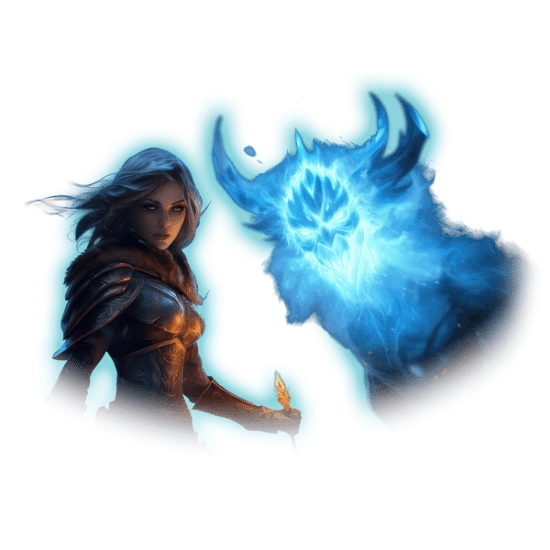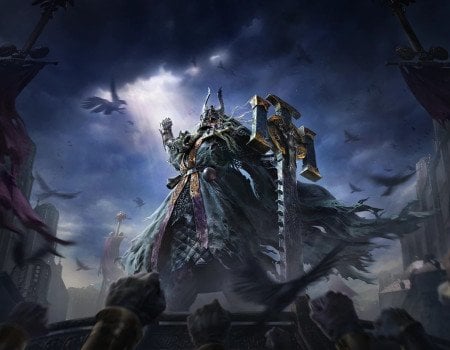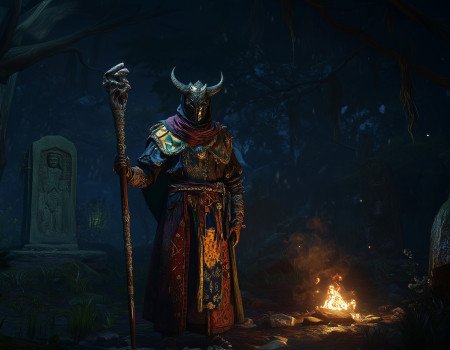Welcome to the endgame, Exiles! In this Path of Exile 2 endgame guide, we’ll explain the entirety of the endgame content and activities that you will be doing after reaching level 65 and completing the first 3 acts on both difficulties. Since the last game and its Atlas of Worlds, a lot has changed. Long story short, the developers have kept the ideas and designs that players liked about the first game’s post-campaign content and threw away things that didn’t work or were not as exciting to the players. So, what PoE 2 has in terms of peak content is an endlessly scalable map system that allows you to, essentially, craft your own content. It has several progression systems and several mechanics, and you’re free to pick whichever you like most and not feel left out by not doing other things. This is the general idea. Now, let’s dive into the details.
Speaking of endgame, when you get there, it's going to be a massive undertaking until the next league drops. For the early access phase, you’ll have the task of reaching level 100 on your character through exploring the Atlas. Since this is going to be the ultimate test for your skills and your character build, getting to the pinnacle boss and defeating it is going to take a lot of time. If you’re relatively new to the genre or just don’t have that much time to grind maps, we recommend Buying PoE 2 Atlas Boost at Skycoach. With this service, you can get any amount of maps completed, the rewards and loot for completing those maps, lots of XP, currency, and much more. It’s going to help you a lot, making your character much more resilient against the endgame enemies. The service is done completely by hand, and we offer a roster of professional ARPG gamers who will farm these maps with you or for you, depending on what type of service you want. Check out the link for more details. Back to the PoE 2 Endgame Guide now!
Read our other PoE 2 guides:
- Beginner's Guide
- Leveling Guide
- Best Classes Tier List
- Bosses Guide
- Monk Guide
- Best Builds
- Trading Guide
- Divine Orb Farming Guide
Note: At Skycoach, you can Buy Path of Exile 2 Boost at the best prices with fast delivery. Use our special PROMO CODE (in green) hidden in this article for a 20% DISCOUNT.
Dawn of the Hunt Endgame Changes
The first major content update for PoE 2, titled Dawn of the Hunt, comes with a lot of changes to the core gameplay, and specifically endgame, addressing a lot of criticism regarding a variety of maps and how progression is structured. We've updated this endgame guide, which now includes those updates, changes, and fixes.
Path of Exile 2 Endgame Overview
One of the reasons the original PoE was so popular is because of how replayable its endgame content was. Each of the many PoE 2 endgame mechanics has a progression system, all kinds of explorable and customizable areas, and lots of bosses, rewards, and character power that can be gained from all of that. If you’re new to Path of Exile in general, here, we’ll explain how all of this comes together into one massive system.
Atlas
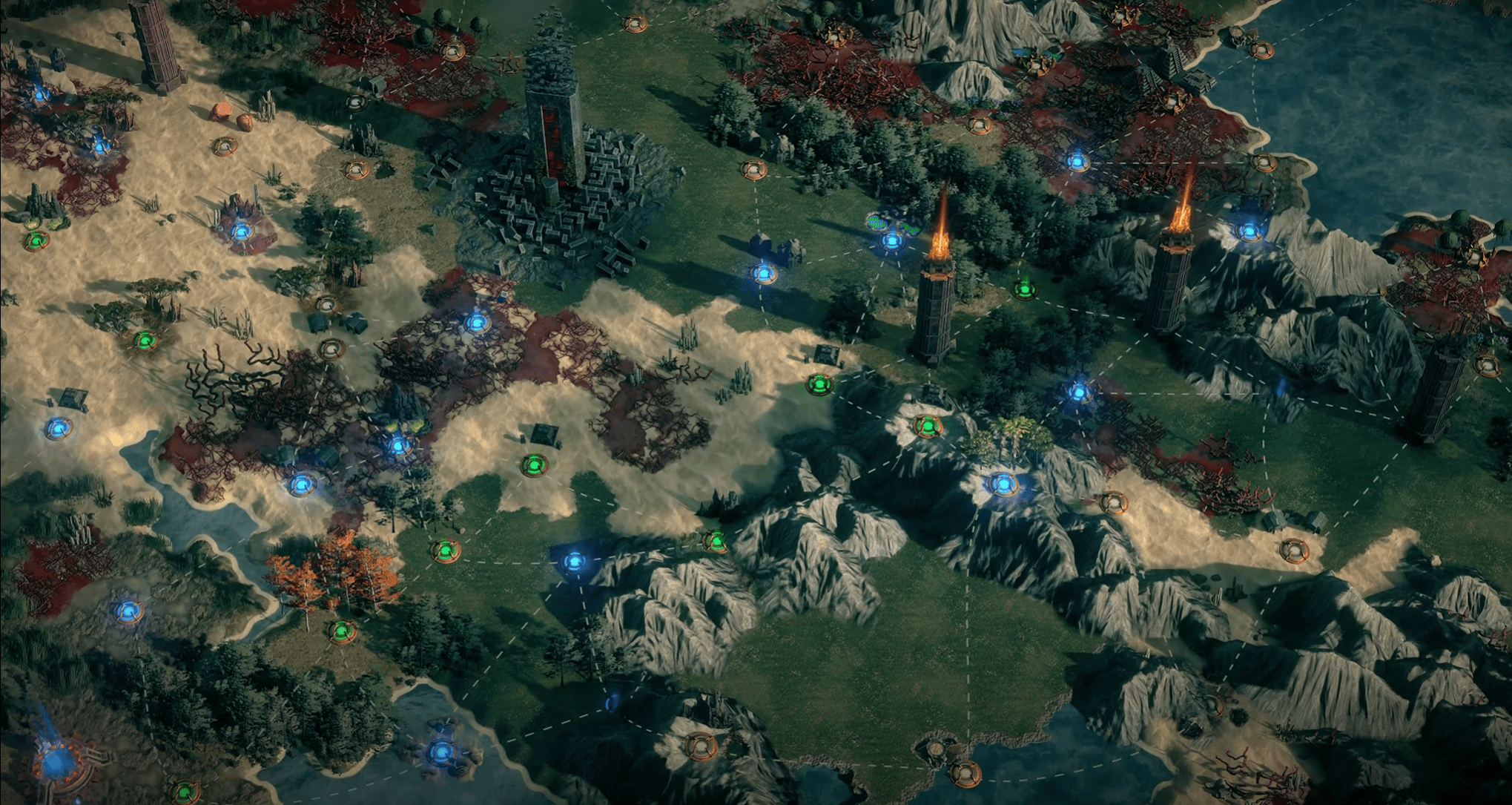
Let’s start with PoE 2 Atlas guide and introduce you to its structure. Atlas is this huge map that serves as the core of the endgame in PoE 2. This map is huge, expanding in all directions.
The premise of the plot is that after the end of the game’s story, there’s some corruption left spilled on the land, and your job is to get rid of it. As of the Dawn of the Hunt update, the introduction to the endgame has been improved to provide you with a clearer goal, structure, and objectives, so that the whole thing doesn't feel just like a big grindy map.
Corrupted Nexus & Cleansing the Atlas
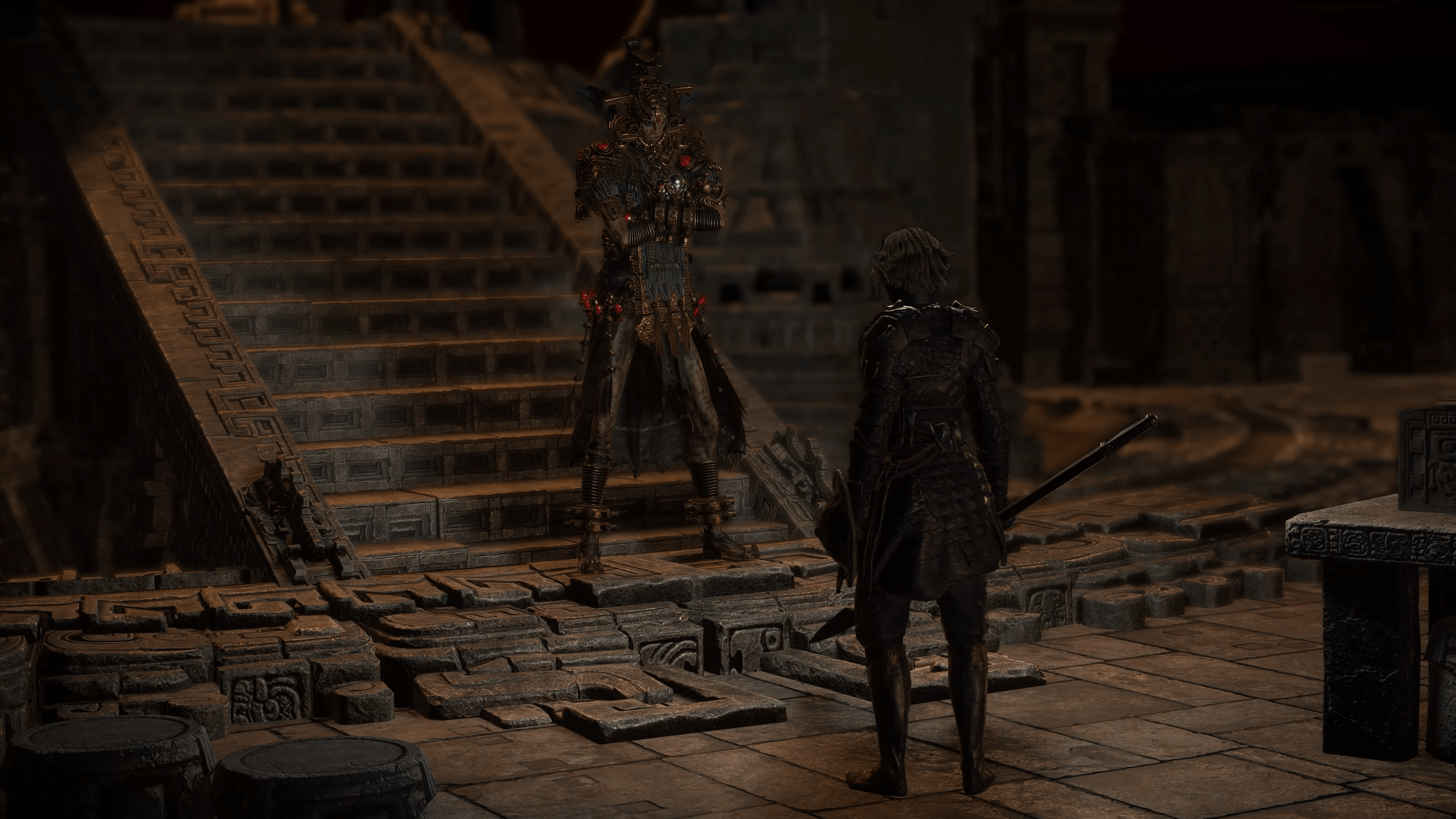
As you begin your journey into the endgame, you’ll be guided by Doryani, who now provides you with a more focused and narrative-driven task: cleansing zones of Corruption across the Atlas. Instead of aimlessly grinding through 15 maps like before, you’ll now work your way toward Corrupted Nexuses, which act as the epicenters of this spreading affliction.
These Corrupted Nexuses appear as marked regions on the Atlas, and your goal is to reach their core. As you progress through the surrounding maps, you’ll notice that enemies leave behind trails of corruption — and that corruption amalgamates into increasingly powerful monsters the further in you go. These maps have all been reworked to include more interesting modifiers and enhanced enemy behavior, making each step toward the Nexus feel more meaningful and rewarding.
Once you reach the Nexus itself, you’ll face a final Rare enemy, which will then spawn one of three new bosses, each a terrifying amalgamation of raw corruption. Defeating this boss triggers a purification ritual from Doryani, transforming its remains into Crystallized Power — a currency used to earn Atlas Passive Skill Points, letting you customize and enhance future map content across the Atlas.
In the middle of the PoE 2 Atlas, there’s the Ziggurat, a temple where the Vaal messed around with space and time. It’s your main hub for opening portals to nearby spots and kicking off your corruption-cleansing adventures.
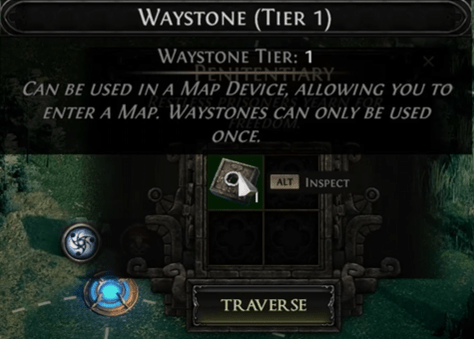
To open a portal, you’ll need a Waystone. Each one has a tier that decides the monster level you’ll face. Just pick a spot next to an area you’ve already cleared, pop in the Waystone, and hit "Traverse" to jump into the next challenge at the Path of Exile 2 Ziggurat.
- By default, you get up to 6 respawns per map when entering the Endgame.
- As you increase the number of modifiers on a Waystone, your available respawns will decrease, raising the stakes.
- Everyone in a party gets their own respawn count.
- Boss fights now use a modified system similar to Pinnacle content — the map owner chooses when to respawn the group together once the boss fight begins.
Everything is totally random—monster types, map visuals, and even layouts keep you guessing. Your main goal? Take down all the tough, rare, and unique enemies to complete the map. Once you’re done, you’ll unlock the next spot to explore and build your path through the Atlas. But if you die, that map’s gone for good—you’ll need to figure out a different way to reach the areas beyond it.
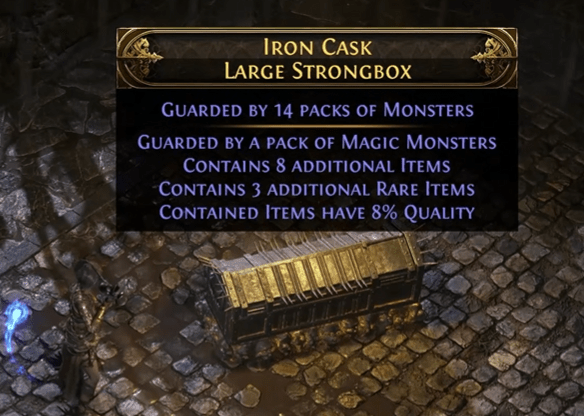
The maps also have other random encounters besides the monster packs roaming around. For example:
- Precursor Artifacts – relics of corruption that lure monsters to their power. Kill the mobs to receive a temporary bonus effect that will help you clear the rest of the map. There might be different bonuses:
- Increased movement speed
- Elemental shield damaging enemies around you
- Increased XP gain
- Increased chance to find rare loot BLOG20
- Strongboxes – chests filled with rare loot but also containing a trap. Opening a chest releases the monsters and the debuffs. Strongboxes can be modified using currency Orbs.
An example of a strongbox you might encounter on Atlas maps is the Iron Cask - Large Strongbox, with the following properties:
- Guarded by 14 packs of Monsters
- Guarded by a pack of Magic Monsters
- Contains 8 additional items
- Contains 3 additional rare items
- Contained items have 8% Quality
This strongbox offers both valuable loot and a significant challenge, as opening it will trigger the release of the monsters guarding it.
- Crystalline corruption – monsters frozen in place. Break them free and defeat them to gain Essence – an item type that can be used to upgrade normal items to magic items with a guaranteed mod.
An example of an Essence encounter with the item shown:
Essence of Haste
- Effect: Upgrades a normal item to a magic item with a guaranteed speed modifier (e.g., increased movement speed).
- Stack Size: 1/10
- Usage: Right-click the Essence, then left-click a normal item (like boots) to apply the upgrade.
Essences like this are ideal for crafting gear with specific, guaranteed modifiers, making them a valuable resource in both early and late gameplay.
Dawn of the Hunt update introduces new Essences:
- Essence of Hysteria
- Essence of Delirium
- Essence of Horror
- Essence of Insanity
As of the latest update Essences can also be corrupted with Vaal Orbs to give you more unpredictable qualities. Plus, all the Essences in the Unique Map can also be corrupted as well.
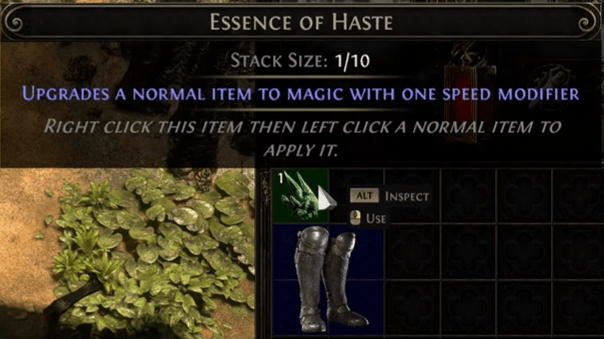
How to craft Waystones in PoE 2? It’s pretty simple. Waystones can be customized using the same currency items you use for crafting gear. Orbs of Transmutation can add a prefix to boost the rewards, while Orbs of Augmentation can add a suffix to ramp up the challenge. These simple tweaks can turn a regular Waystone into something much more rewarding—or dangerous!
Enhancing waystones with mods is crucial for unlocking higher tiers and ensuring steady progression, but it demands tackling significantly tougher challenges. Crafting a Waystone must be approached carefully. Certain maps feature varying monster densities, with some packed tighter than others. You may encounter maps with more magic and rare chests or unique monsters. Additionally, map layouts range from straightforward and linear to sprawling and open, offering diverse exploration experiences. Some of the best strategies for PoE 2 endgame will involve exploring different modifiers and thinking about what makes certain maps good to maximize your returns.
Clearing corruption from higher-tier waypoints earns you points to invest in the skill tree for further Atlas customization.
How to Progress in PoE 2 Atlas?
After reading all of this, you might have a question: how do you progress in PoE 2 Atlas? The loop is really simple – you find your first waypoint, and then you use it to open another node. You clear the new map, collect more waypoints, and continue plotting your path through the map. This is it in broad strokes. Of course, the endgame is a little more complex than that.
Atlas Passive Skills Tree
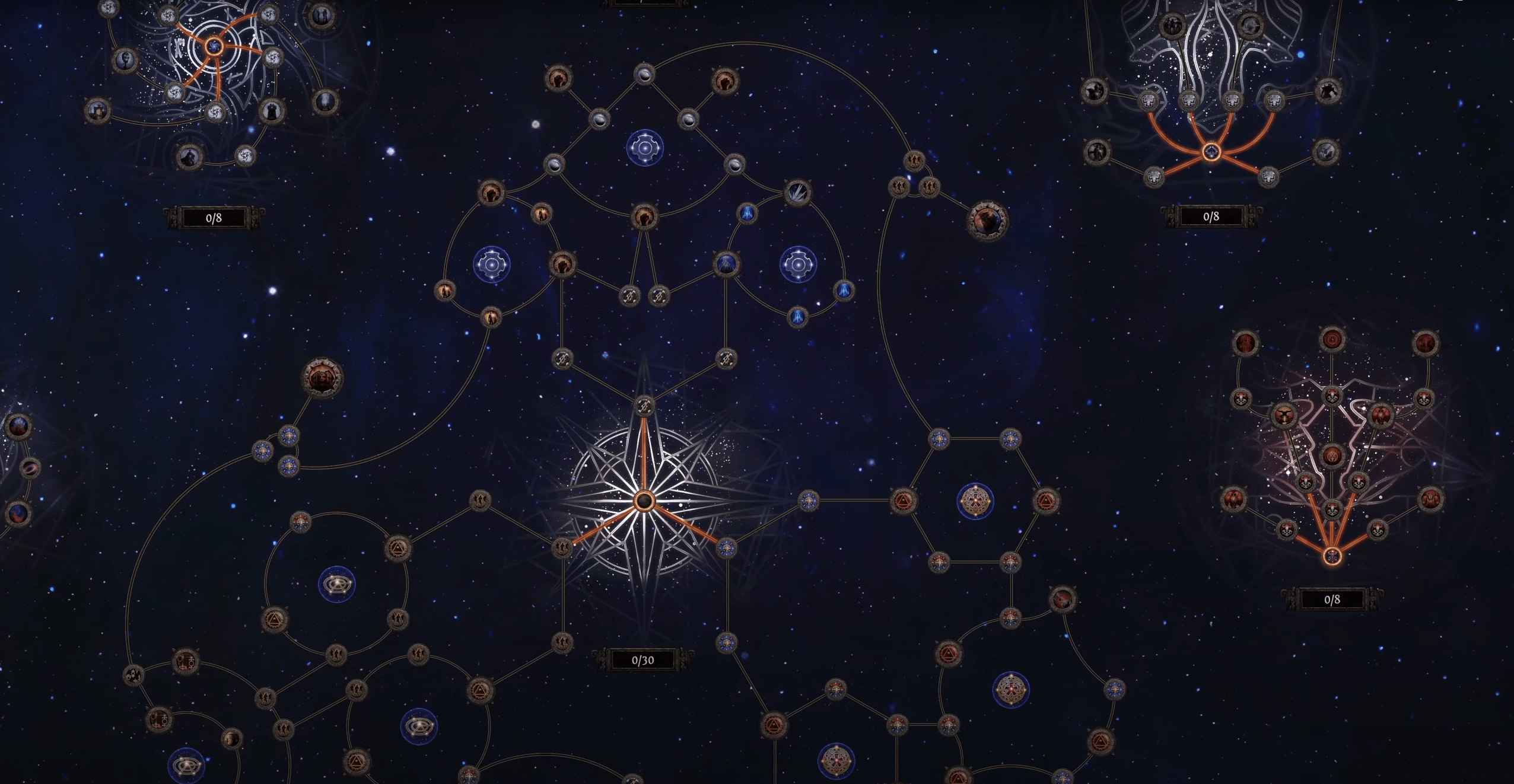
This tree contains passives that allow you to customize the Atlas nodes even further, increasing the amount of monsters or rewards throughout the entire map, essentially tailoring the endgame experience to your personal preference. There are lots of nodes, and each one has some kind of global effect. Better yet, there’s a dedicated section on the tree for every mechanic in the endgame. This is so that you don’t have to respec points if you want to try different Path of Exile 2 endgame activities.
Since the Dawn of the Hunt update, Atlas Tree has also been expanded, and you can find many of the new mechanics there and improvements to existing ones, too. Ten extra Atlas Passive Points have been added that you can earn by completing five different Unique Maps!
When plotting the course through the world map, you’ll find set in different biomes with their own visual style. There are also unique nodes such as towns or cities constructed by the people of Wraeclast that have unique items that can only be found there.
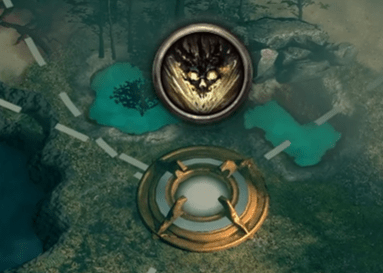 Speaking of exploring, you can activate towers that reveal the surrounding area and nodes, which is perfect for planning your path through the Atlas.
Speaking of exploring, you can activate towers that reveal the surrounding area and nodes, which is perfect for planning your path through the Atlas.
There are maps touched by the corruption. A corrupted map will have more enemies and tougher challenges, but the rewards on such a map are also higher.
Boss Encounters
There are nodes that will have an icon above them, signifying a special encounter like a boss.
Bosses that you will fight on the Atlas map are actually from the campaign acts, but they’re more powerful versions compared to the originals. This is just one of many PoE 2 Endgame Challenges. Since nodes with bosses can be seen on the map, you can choose to take them on or ignore them if that’s the type of activity you don’t like. There’s a dedicated section on the Atlas Skill Tree for boss nodes. It allows you to spend points on changing how the encounters work or how many rewards you’ll get. So, if hunting bosses is your thing, that section of the Tree is for you.
Scattered throughout the game world are unique maps and special nodes waiting to be explored. One example is the Untainted Paradise, a rare map that offers an incredible XP boost, making it a prime spot for leveling up quickly. Other maps will only have one NPC who can give you something special.
Tower Bosses – Unique Encounters
To make towers more than just passive map modifiers, each one now comes with its own boss fight. These aren’t filler bosses — they’re hand-crafted encounters designed around the theme of the map and its mechanics.
Some examples:
- Alpine Ridge: A dramatic showdown between two powerful witches, one of Ice and one of Fire, locked in a battle for control. Ideally, you stop both — before one gains the upper hand.
- Sinking Spire: Features a lightning-infused Remnant of the Vaal. It charges surrounding constructs during the fight, so spatial awareness becomes crucial.
These bosses are found only inside Tower maps and add a great deal of flavor (and loot) to tower-related gameplay.
Hideouts
One other special type of map can be used to establish your own base. First, you must locate such a node on the Atlas, then insert a waypoint and clear it. Once cleared, the map can be claimed as your personal hideout that can be decorated as you see fit.
In Path of Exile 1, hideouts were a cornerstone of player customization and convenience, offering a personal sanctuary amidst the chaos of Wraeclast. Introduced with the Forsaken Masters expansion, hideouts served as the player's home base, where they could interact with NPC masters, store loot, and craft gear. Over time, they became highly customizable spaces, allowing players to design their hideouts with decorative items, themes, and layouts that reflected their personality. Functionally, hideouts streamlined gameplay by providing quick access to crafting benches, map devices, and stash tabs, making them indispensable for both casual and hardcore players. Whether for aesthetic pride or practical utility, hideouts became an essential part of the Path of Exile experience, fostering creativity and efficiency in equal measure.
The same remains true in Path of Exile 2. You’ll have the opportunity to set up crafting stations and invite various NPCs to sell you something or for other purposes. PoE 2 hideout customization is very much still a cornerstone of the experience.
Dawn of the Hunt New Endgame Maps
In the Dawn of the Hunt, the developers added new and unique maps with their own encounters and bosses.
- The Phaaryl Megaliths - set in Ezomyte Forests lets you summon of up to 10 bosses that you can fight one after another with increasing rewards.
- Fractured Lake - a uniquely-looking map that has unique monsters doubled, so you're always fighting two rares at the same time. It also has a Broken Mirror altar, which could contain a trinket like a ring or an amulet.
- Essence Cavern - has a boss and rare monsters trapped in its center. You can free and defeat those rare monsters, but their attributes will be transferred to the boss, making him deadlier with each defeated monster. So, it will be up to you how much more powerful an opponent you want to fight.
Endgame maps are not just a collection of random monsters and treasure chests. On top of already existing mechanics, each map often features its own mechanic, and the latest content update iterates on this idea, making endgame farming more exciting.
Path of Exile 2 Atlas Map Exploration Tips
Exploring the Atlas in Path of Exile 2 is a thrilling yet intricate process, offering countless opportunities to tailor your endgame experience. Whether you’re a seasoned player or new to the game, navigating the Atlas effectively can make all the difference in your progression and rewards. Here are five essential Path of Exile 2 Atlas map exploration tips to help you master the endgame:
- Plan Your Path with Towers: Use Precursor Towers to reveal surrounding nodes and plan an efficient route through high-reward areas.
- Optimize Your Waystones: Craft Waystones with prefix mods for better rewards and suffix mods for greater challenges, balancing risk and reward.
- Focus on Unique Nodes: Prioritize exploring special nodes like cities or Untainted Paradise for unique items and massive XP boosts.
- Leverage the Atlas Tree: Invest points in the Atlas Tree to enhance your favorite mechanics and customize rewards to fit your playstyle.
- Adapt to Corruption Zones: Embrace the increased difficulty of corrupted maps to gain higher rewards, but ensure your build is equipped to handle the challenge.
By incorporating these strategies, you’ll not only progress faster but also maximize the fun and rewards of your time in the Atlas. Remember, the Atlas is designed to let you explore and experiment, so don’t hesitate to adapt your approach based on the challenges you face. Good luck, Exile!
Endgame Mechanic: Breach
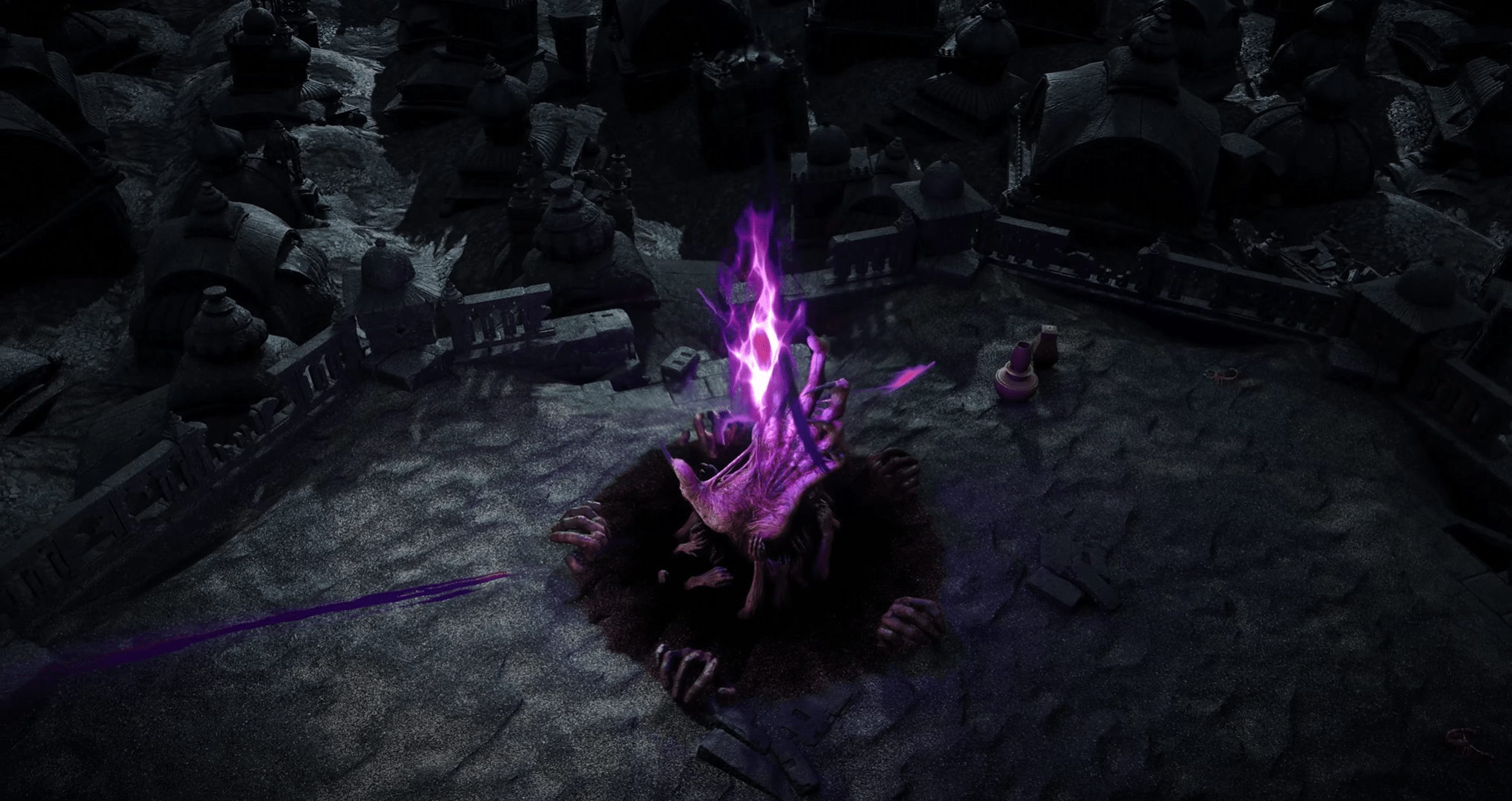
Breach is a mechanic adapted from the first game’s league of the same name. It works in a similar way as before but features completely new monsters, bosses, rewards, and progression.
Essentially, a Breach is a tear in the fabric of reality. Open it to start seeing all of the monsters that are hiding in the parallel place of existence.
To maintain the Breach, you must keep slaying these monsters emerging from it. The quicker you defeat these foes, the more will spawn, increasing both the intensity of the challenge and the potential loot rewards.
You’ll also encounter clasped hands within the Breach, which release additional items when activated by running over them. These can be a good boost to the rewards of the PoE 2 Breach Mechanic.
Breach Tablets
When clearing another Breach, you might find a new type of loot that has been dropped from monsters.
- Tablets are unique items used in Towers to add more nodes featuring a particular mechanic.
Breaches can reward you with Breach tablets, which allow you to add more locations featuring this mechanic to your progression. To use them just come to any tower and spend a found tablet though a special UI window that will pop up.
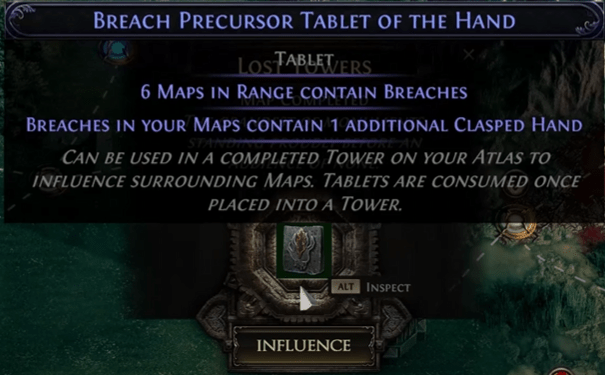
Just like literally everything else in the game, tablets and their properties can be changed by currency items, such as Orbs. If you’re looking to tailor your Breach encounters, you can customize the tablets to fit your preferences. Add up to two mods to tweak aspects like rare monster counts, clasped hands, or overall density, making it easier to keep the Breach active longer. While the outcomes have an element of randomness, you can still strategize to craft the type of Breach experience you want. For example, take a look at the Breach Precursor Tablet of the Hand:
| Effects | Usage |
| Adds Breaches to 6 maps within range. | Insert into a completed Tower to influence surrounding maps. |
| Breaches in these maps contain 1 additional Clasped Hand. | Consumed upon placement. |
This tablet allows you to boost the presence of Breaches and increase rewards in specific areas, making it a strategic tool for players focusing on the Breach mechanic.
Some Towers are placed close to each other, having overlapping areas of effect. So, if you drop two different, modified Breach tablets, their effects will be stacked in those nodes highlighted by both towers.
Rewards
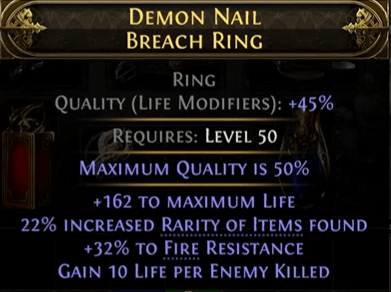
Each endgame mechanic, including Breach, has its own pool of unique items that you can find among other rewards. We’re talking about unique items that don’t appear anywhere else in the game. In Breach, there are:
- Catalysts – boost the quality of rings and amulets by enhancing specific mods.
- Breach Rings – unique rings upgradeable with Catalysts, increasing quality up to 50%. BLOG20
Breach Rings can be some of the strongest accessoirs in the game when modified with catalysts, which is a great motivation to play through the Breach mechanic.
Breach Pinnacle Boss
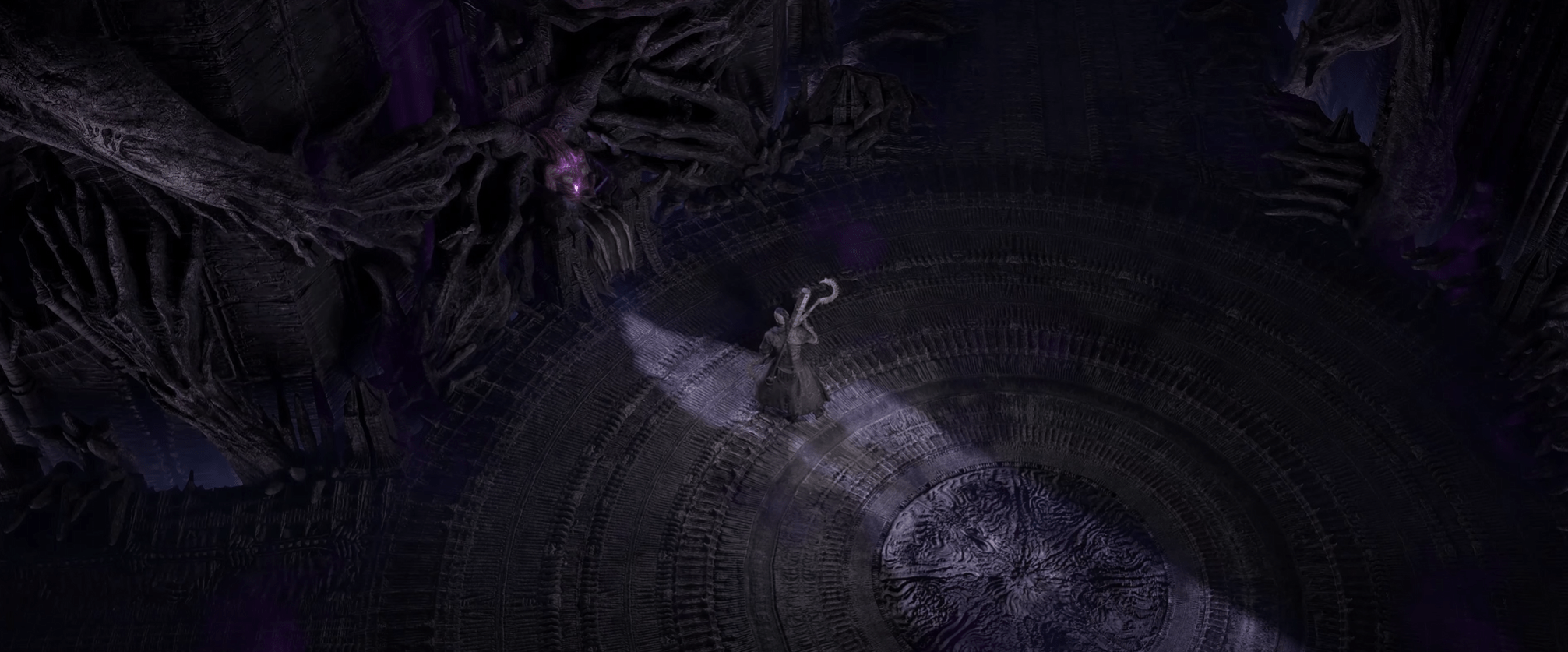
Sometimes, monsters leave behind something called Breach Splinters. When enough Spliters are gathered, they can be used to craft a Breach Stone. Then, take it to any Realmgate node on the Atlas and insert the stone to access the Breach’s Path of Exile 2 Pinnacle Boss encounter.
Doing so will take you to the Twisted Domain map, where there’s only one massive Breach. Trigger it and defeat all enemies, which will lead you to the boss called Xesht, We Who Are One.
Defeat the boss for a chance to receive specific unique items that can only be found from them.
Breach Progression System
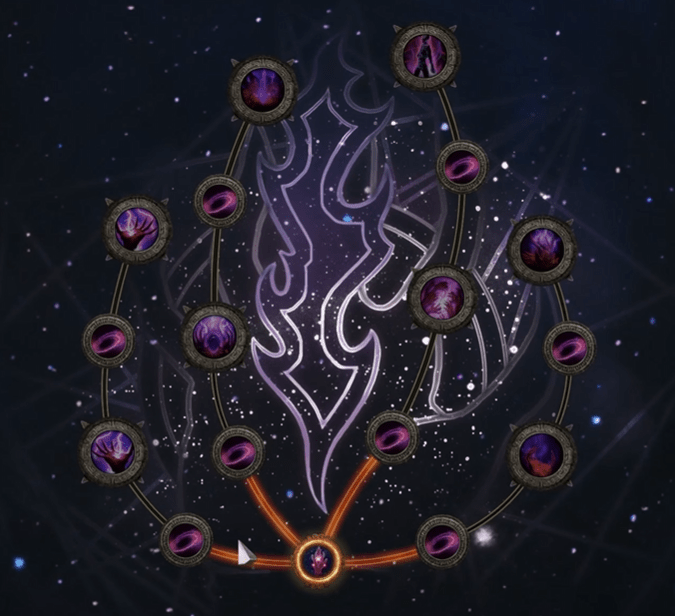
Defeating Xesht rewards you with a point to invest in the Breach section of the tree. Allocating points here increases the difficulty of all Breaches, including the boss encounter, but also boosts the rewards. The nodes are divided into two types: small ones that add general difficulty to the Twisted Domain, and larger nodes offering specific bonuses like:
- Grasping Hands: Adds a 25% chance for Clasped Hands to be guarded by magic monsters, and increases the number of Clasped Hands by 50%.
- Waking Nightmare: Doubles the Splinters you get from Clasped Hands, but applies a debuff.
To gain more points, you'll need to beat Xesht on higher difficulties. Some rewards are exclusive to harder tiers, with difficulty 4 posing a particularly tough challenge.
Understanding Breach in Path of Exile 2 will help you get your head around the rest of the endgame activities because they’re structured pretty similarly, as you will soon learn.
Towers and Tablets – Reworked
In Dawn of the Hunt, the Tower and Tablet system received a massive quality-of-life overhaul. Previously, managing towers and juggling dozens of tablets felt like unnecessary busy-work. Now, the system is streamlined, more powerful, and significantly less tedious.
Here’s what’s changed:
- Tower frequency has been reduced by two-thirds. That means fewer interruptions and less clutter on your Atlas.
- In exchange, each tower is much more impactful, applying twice as many mechanics by default to the maps in its radius.
- On top of that, map tier now scales Tower impact. By the time you're running Tier 15 maps, each tower applies four times the effect compared to before.
- Towers can now stack up to 3 Tablets at once. You get one Tablet slot by default, but if you complete the tower with more challenging modifiers on its Waystone, you unlock 1 or 2 additional slots — rewarding high-risk gameplay.
The end result? Fewer towers to manage, but much more juice packed into each one.
The Dawn of the Hunt update also introduces a set of Unique Tablets, and they’re not just more modifiers — they’re game-changing mechanics.
Each one adds unique rules to maps in a tower’s radius. A few examples:
- One tablet lets you run any map inside a tower radius, even if it’s not connected to your current region. This opens up flexible routing across the Atlas.
- Another duplicates Runic monsters during Expedition encounters, while also weakening enemies that emerge from the ground — effectively doubling your loot while reducing danger.
These tablets create situational opportunities for wild map juicing, and the smart player will watch for tower overlaps and plan routes accordingly.
Endgame Mechanic: Ritual
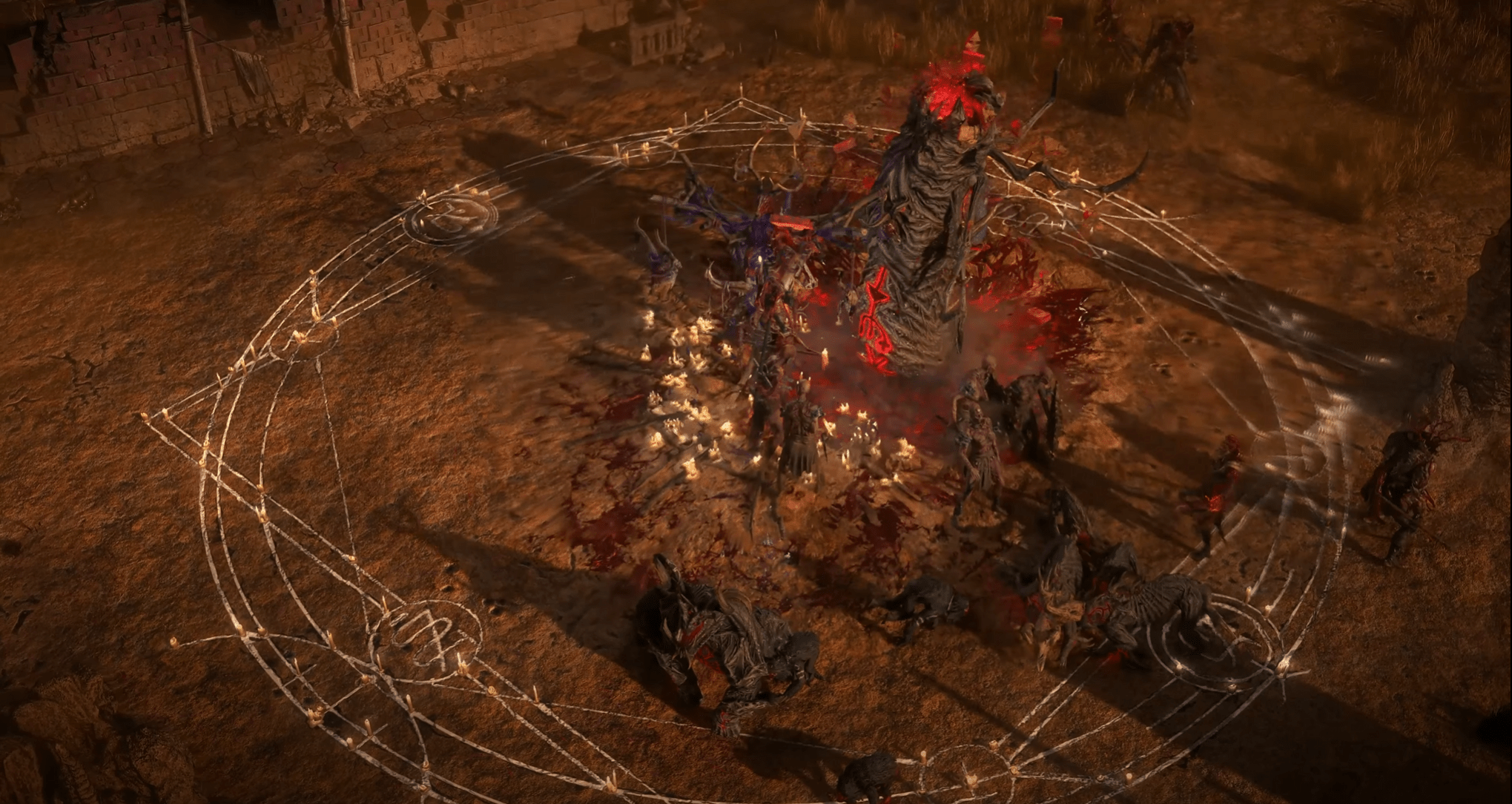
Ritual is another mechanic that comes from a Path of Exile 1 League. Ritual altars are sacrificial sites built by someone who goes by the name – King in the Mists. Nobody knows who that is and why he builds them. The nodes on the Atlas that have a red symbol let you know that a map will contain the Ritual altars.
The way it works is – you need to slaughter monsters within the altar’s circle to feed them. Once the sacrifice is completed, interact with the altar to begin the Ritual. The monsters you just killed to fuel the altar will rise again and attack you, which can be pretty surprising if you don’t know what to expect. So, you have to kill them again to finish the Ritual. The only difference is that all monsters will resurrect at the same time, so you’ll be fighting against a large army instead of waves of incoming packs. Be warned!
The Tribute is a currency that you get after completing a Ritual. This currency can be spent at the same altars to buy some unique items. To gain more Tribute, you’ll need to find more altars and repeat the rituals.
Each successive Ritual you do on the same map will spawn the monsters revived by the previous altars in addition to the ones you will sacrifice at your current altar. So, be careful about how many altars you want to do on the same map because you might end up fighting a massive horde of enemies. On the other hand, you will receive large amounts of Tribute.
Omens
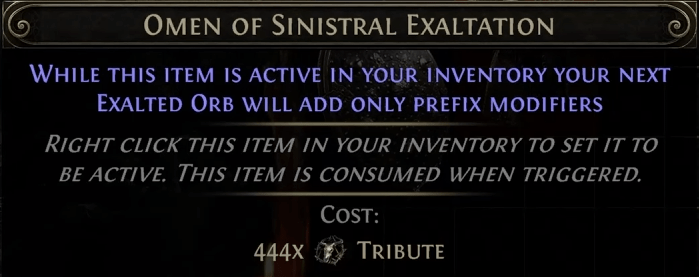
Omens are found among the other wares at the altars. These items are used for meta-crafting. In other words, Omens are used to craft items that affect other crafting items.
Let’s say you have an item with some modifiers that you like and some that you’d like to remove. The right Omen can help you remove those mods you don’t like and keep the ones you do.
Ritual Tablets
Ritual has its own type of tablet that will help you add Rituals to more maps around the towers where you’ll use them. Don’t forget that you can use Orbs to modify these tablets to make Rituals more rewarding.
Ritual Pinnacle Boss
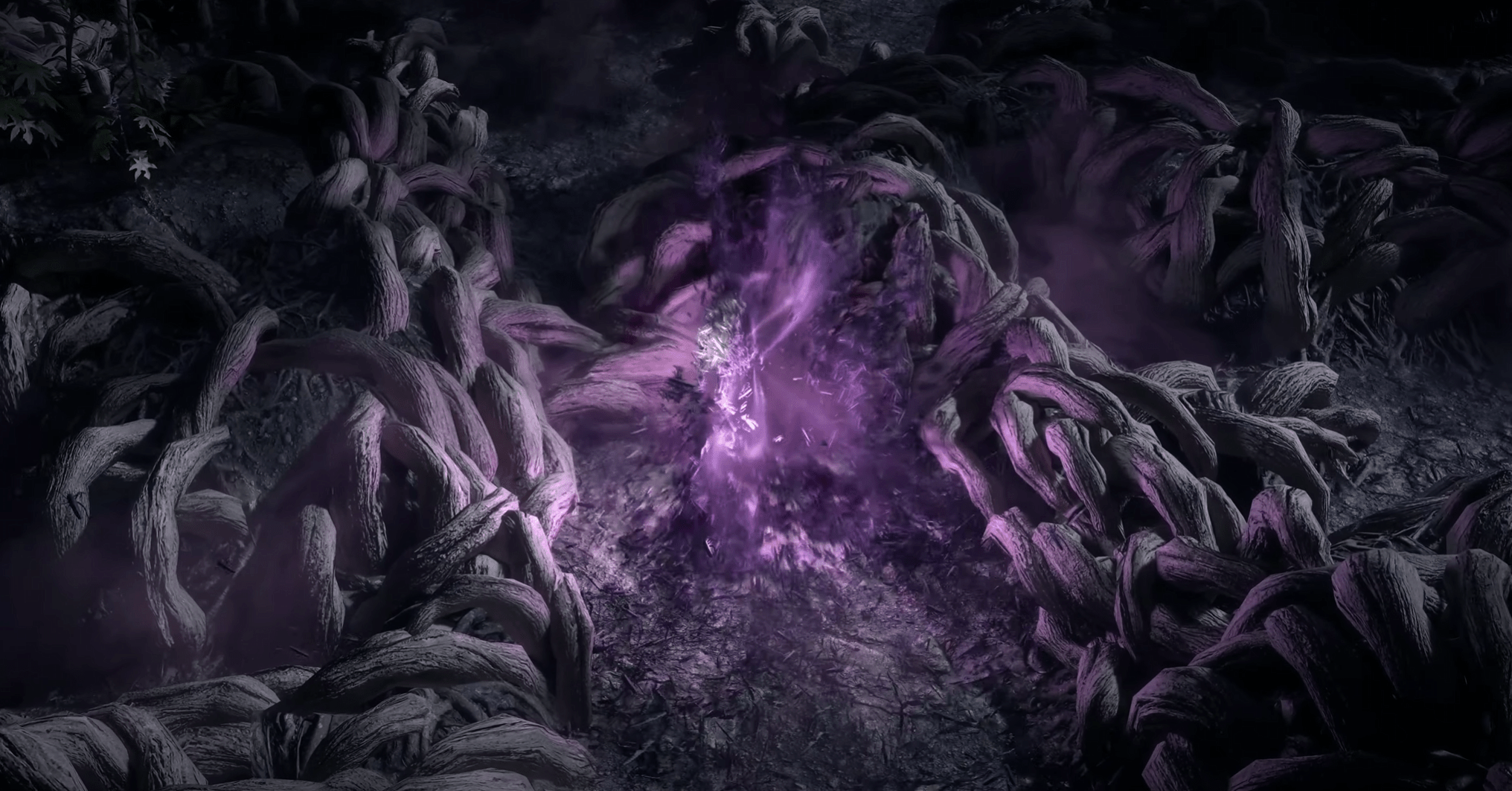
The ultimate challenge of the Ritual mechanic is facing the King in the Mists. Overcoming this formidable foe grants you a chance to obtain exclusive, unique items and valuable points to enhance the Ritual section of the Atlas Tree.
Endgame Mechanic: Delirium
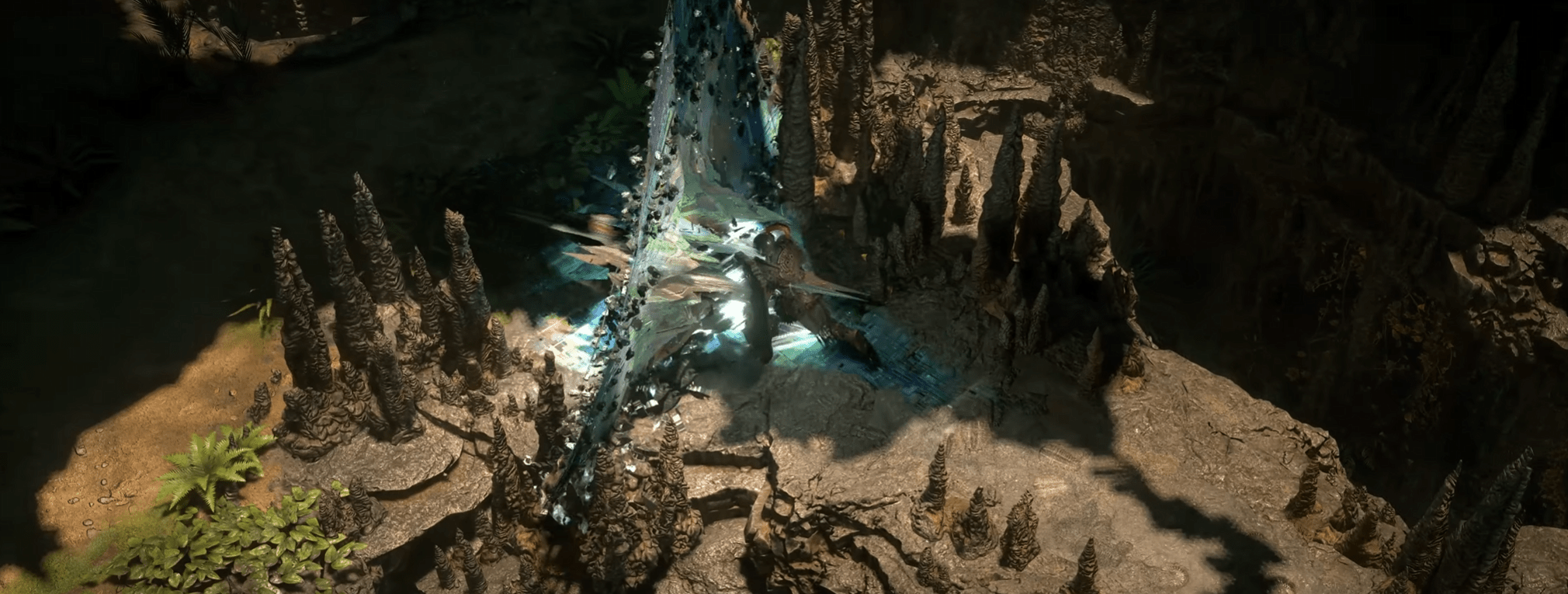
Some maps will be affected by the madness created by a mysterious entity that takes a special interest in you. Maps that have a Delirium icon will feature these weird magical mirrors. Going through them will cause the mists of Delirium to spread out across the map you’re in.
Staying within the mist will help maintain the nightmare, which is exactly what you want to do. Killing monsters while in the mist will increase the rewards that drop. But the deeper into the mist you go, the stronger the monsters are.
Killing rare or unique enemies has a chance to spawn demons right after killing them. These demons will also chase and attack you.
Distilled Emotions
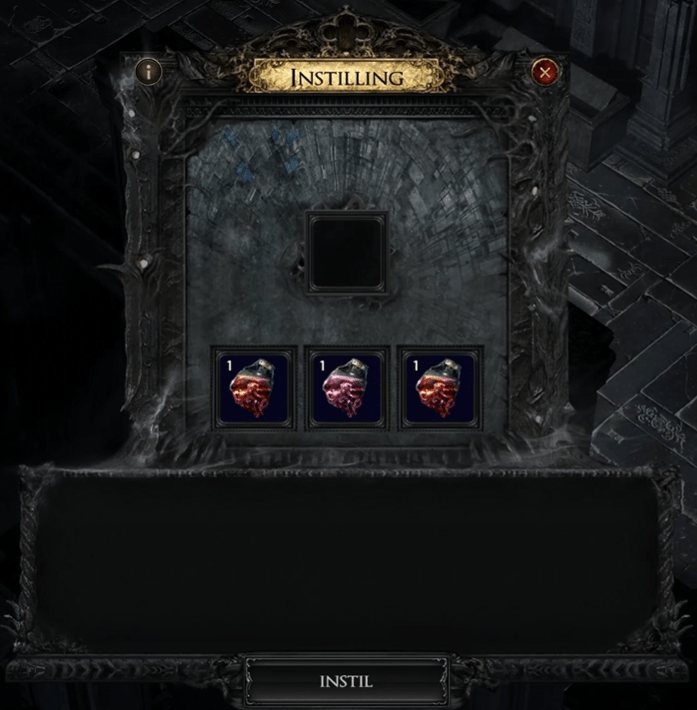
The Delirium Mist is where you can get a new crafting material called Distilled Emotions. You can combine them together and instill them into one of your amulets to get passive bonuses from the passive skill tree without actually spending points on unlocking them on that tree! In other words, this is like getting an extra passive point for free, which would be attached to your gear. On top of that, you might get passives this way that you don’t have access to on the tree, which means you can get class bonuses that would take many more points to get to.
The second use of Distilled Emotions is instilling them into the Waypoints to add difficulty and the Delirium mechanic to the maps.
Delirium Tablets
These tablets can be paired with instilled waypoints to enhance your Delirium experience, allowing you to adjust monster pack size, slow the fog's dissipation, or accelerate your progression toward Delirium's pinnacle encounter.
Delirium Pinnacle Encounter

Simulacrum Splinters is something that you can find after defeating the monsters in the mist. As you might have guessed already, they can be turned into a key to access the Simulacrum map.
In Delirium, the mysterious entity will create encounters based on the memories of your character. In these encounters, your goal will be to survive several waves of monsters. After each wave, you’ll get a reward. You’ll have the option to leave after every wave or continue fighting harder waves.
Higher waves will have unique bosses like Omniphobia, the Fear Manifest. Defeating them will grant you points to spend on the Delirium section of the Atlas tree.
Endgame Mechanic: Expedition
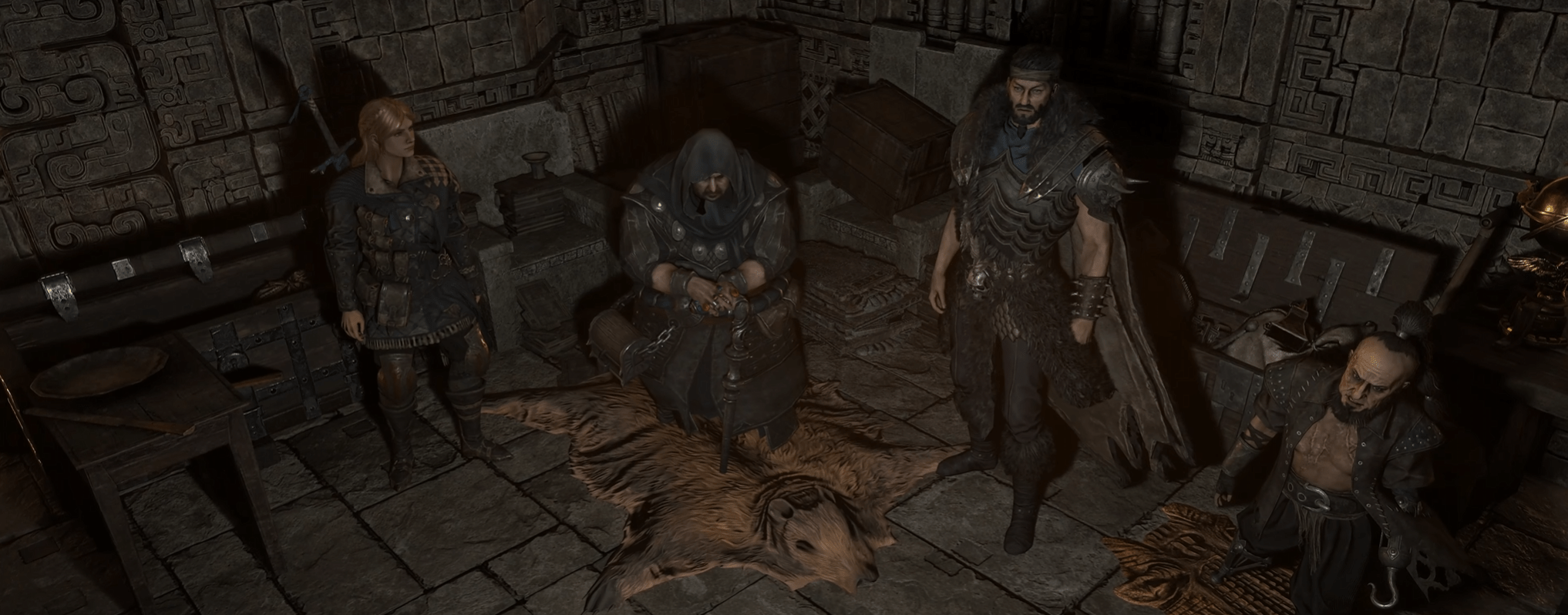
The expedition portion of the endgame is handled by four Kalguuran settlers, whom you will meet as you clear the corruption off the map. There are burial sites filled with lost artifacts. Your job will be helping these settlers dig up those long-lost precious artifacts using explosives.
The specific locations of burial sites will be marked with flags. You’ll be given a set of explosives connected by a wire. Your just is to plant as many explosives as you want connecting those burial sites, so that you can open them all with one chain of explosions.
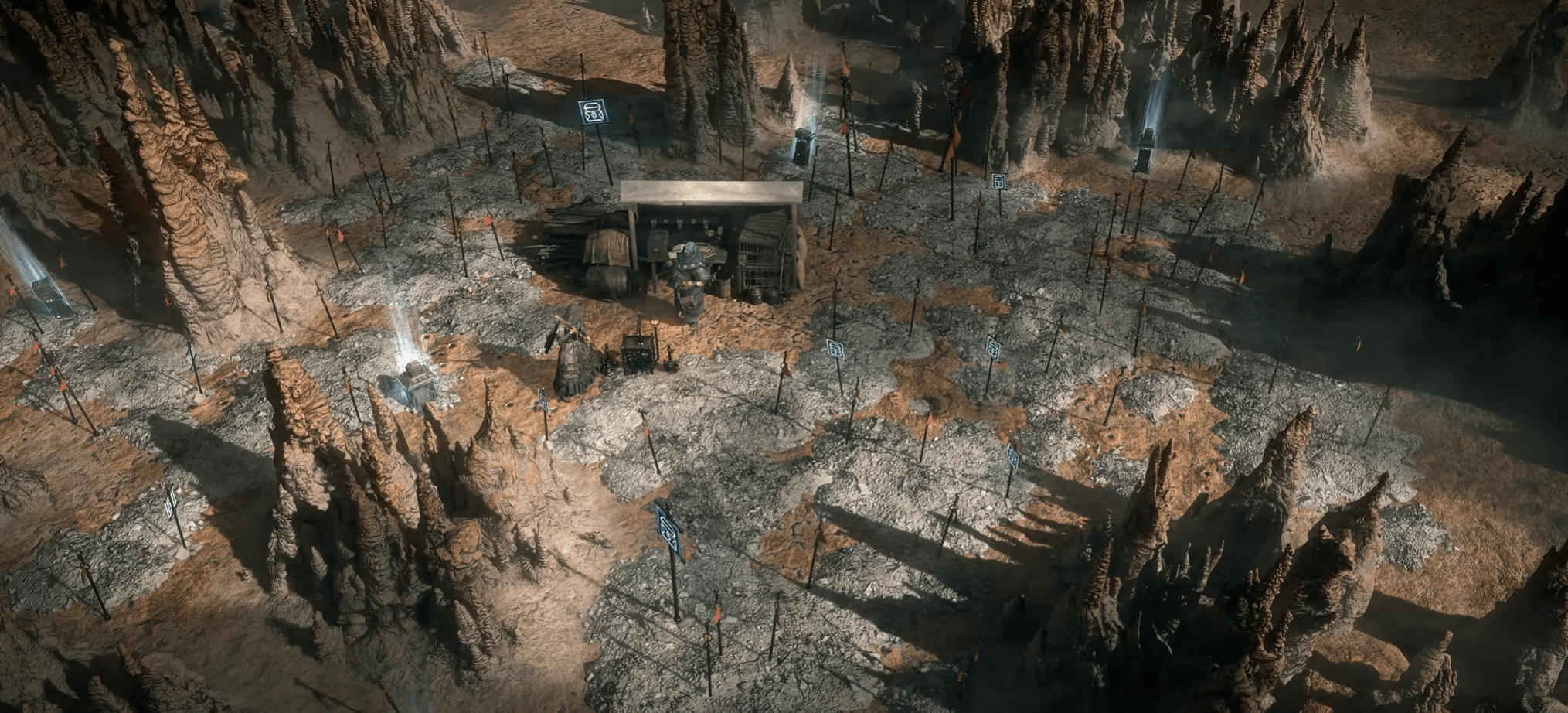
But when you use the explosives, it will cause the owners of those artifacts to be resurrected and angry. The more sites you open, the more enemies you will have to defeat before being able to open. It’s a pretty solid way of Path of Exile 2 endgame loot farming as long as you do it the smart way.
Remnants
Remnants are special types of burial sites that have additional properties. Each one you blow up will make the subsequent monsters more powerful and more rewarding.
Vendors
Dannig, Rog, Tujen, and Gwennen are the settlers in charge of the Expedition. You’ll find either one of them near the burial sites. They will offer you some cool rewards in exchange for artifacts that you get from the sites. These artifacts act as currency that you can use to get the items from these vendors.
Expedition Tablets
Expedition tablets can increase the amount of sites on the map, which will give you more freedom in choosing how many sites you want to open and which ones have the most profitable modifiers. Besides, more sites equals more rewards, so that’s always good. Some tablets may increase the explosion radius, allowing you to crack open more sites at the same time. Other tablets might increase the amount of Remnants you’ll find on a map.
Logbook
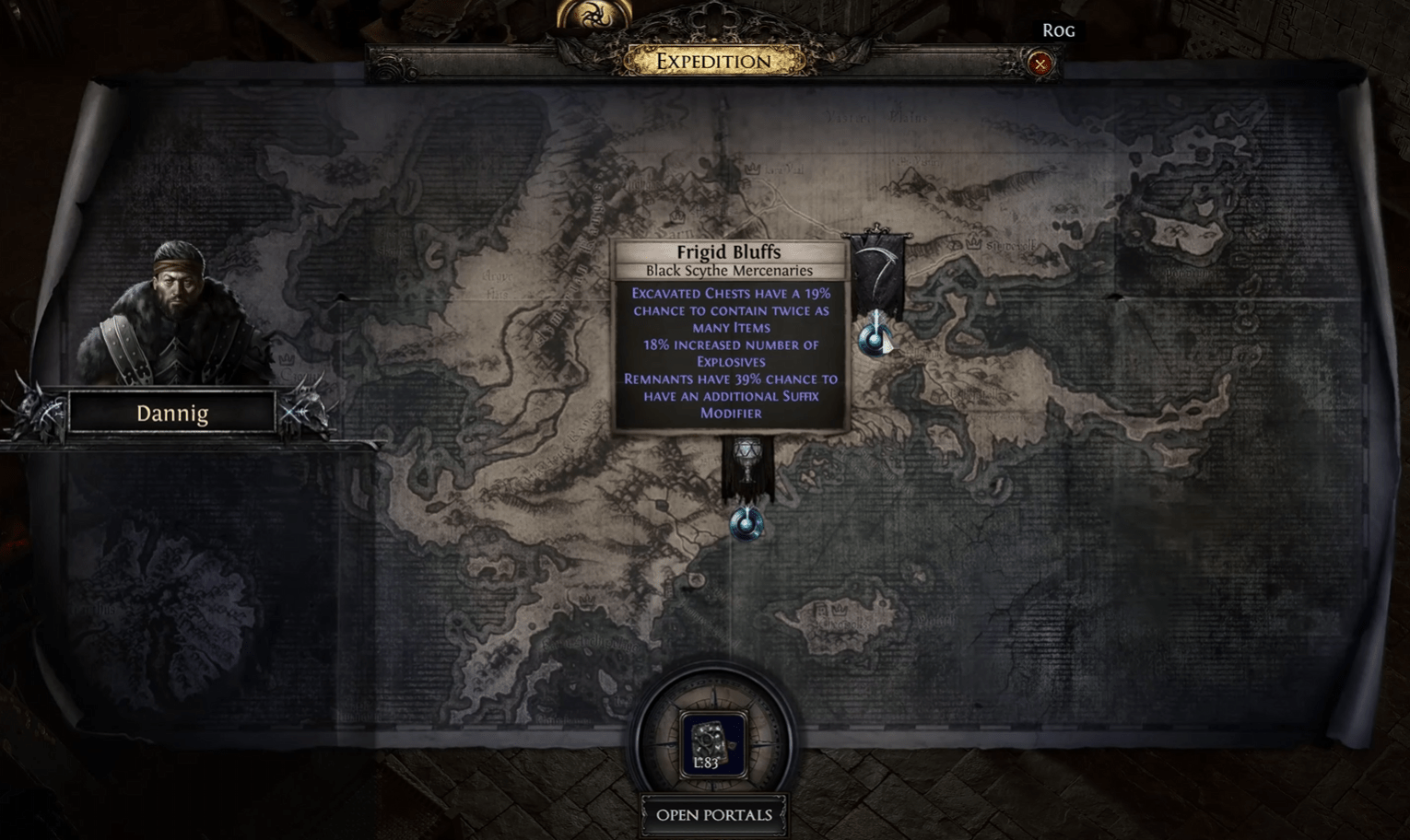
Logbooks are special maps that have marked locations of buried treasures and relics. Logboos are kind of like unique treasure maps. As you can see on the screenshot, they have their own UI that lets you know the details of each special map. Essentially, this is a map of one massive dig site. This is where you’ll be able to create a really long chain of explosives and go through a very high number of remnants, some of which can be deadly for your current build.
Expedition Pinnacle Boss
Among the notable encounters in a Logbook is Olroth, the undead commander of the Knights of the Sun. Defeating this formidable boss rewards you with exclusive items and points to allocate in the Expedition section of the Atlas tree.
Endgame Trials
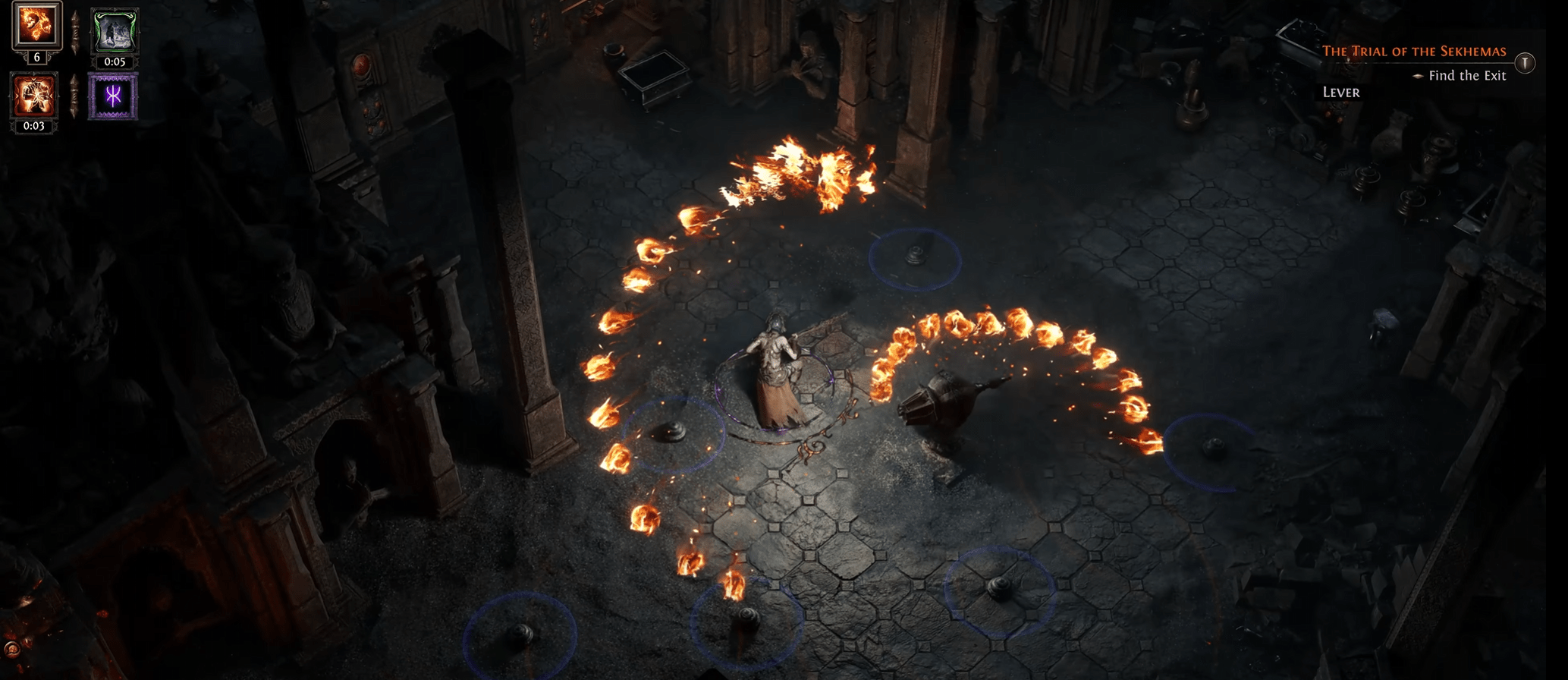
The Ascendancy Trials that you completed in Acts 2 and 3 to unlock Ascendancy classes and earn points for their passive skill trees take on a whole new life in the endgame. These trials, now expanded into full-fledged endgame challenges, offer significantly increased difficulty, intricate mechanics, and exclusive rewards that were not available during the main campaign. So, this is yet another part of PoE 2 early access endgame content.
Both trials have been designed to push your builds to their limits while rewarding those who can overcome their unique obstacles. Whether it’s navigating the treacherous floors of the Trial of the Sekhemas, filled with deadly bosses and Relic-powered customization, or braving the escalating risks of the Trial of Chaos, where greed meets danger in its ten-chamber gauntlet, there’s something for every adventurer willing to take on the challenge. BLOG20
If you’re looking for comprehensive strategies, tips, and detailed explanations of the mechanics of these trials, we’ve prepared two dedicated guides—one for each trial. These guides walk you through everything you need to know, from basic mechanics to advanced strategies for tackling their endgame versions. Be sure to check out our Trial of the Sekhemas Guide and Trial of Chaos Guide for an in-depth look at what it takes to conquer these thrilling activities and claim their unique rewards.
Endgame Mechanic: Rogue Exiles aka Anarchy
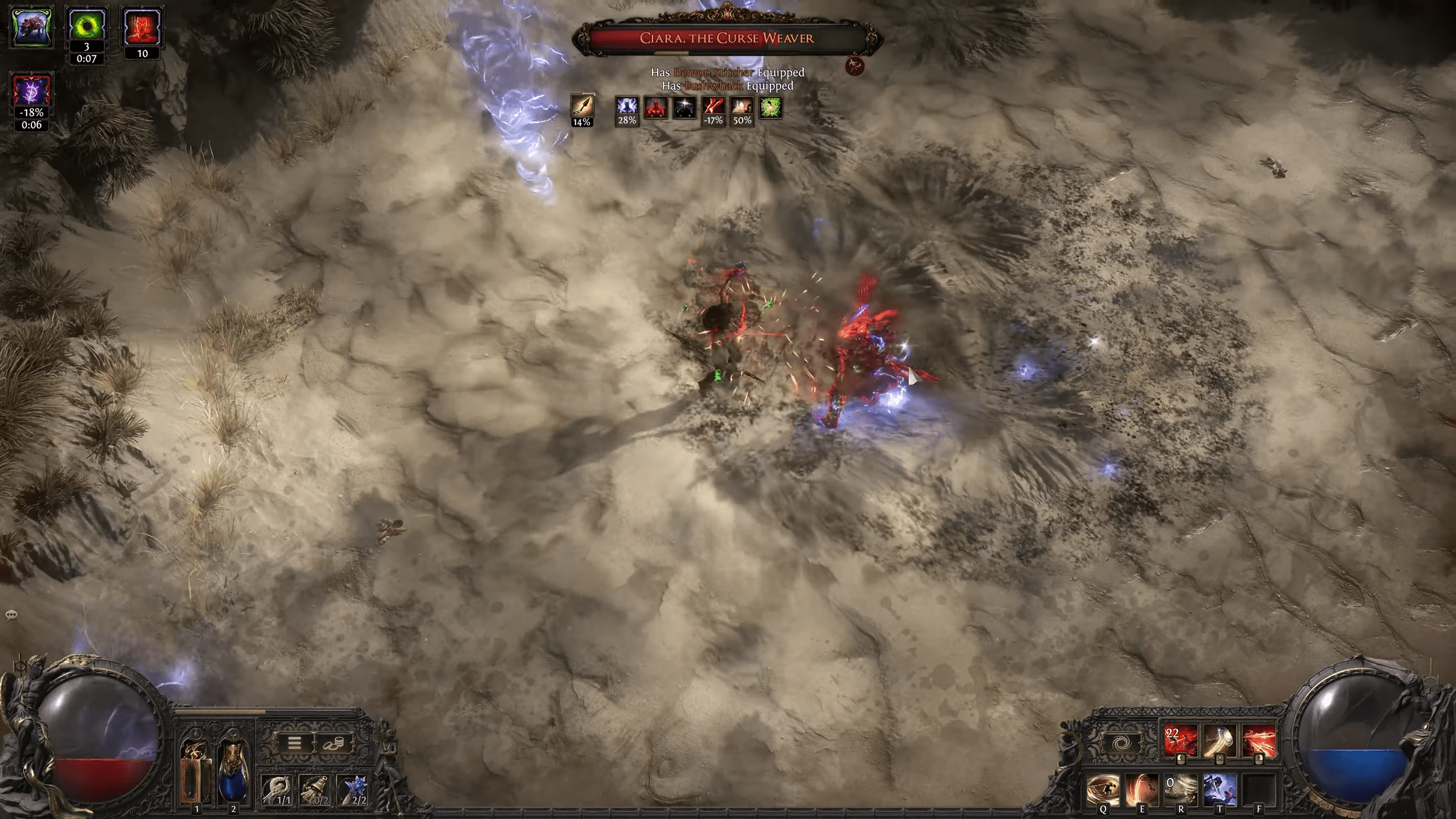
Rogue Exiles make a thrilling return in Path of Exile 2, reimagined and vastly expanded from their origins in Path of Exile 1’s Anarchy League. While the original Rogue Exiles were deadly player-like enemies that randomly appeared throughout the game, PoE2 turns them into dynamic, high-stakes encounters found exclusively in Endgame Maps.
In the Endgame, Rogue Exiles are intelligent, aggressive NPC enemies who use the same skill gems and items available to players. These aren’t just scripted fights — Rogue Exiles feature advanced AI, capable of dodge rolling, evading abilities, and smart pathfinding. Each of the 12 unique exiles has its own skills, behavior, and personality — some taunt you with arrogance, others show admiration for your prowess in combat.
What sets them apart is their loot system: Rogue Exiles wear actual equipment, including powerful or rare uniques, which will drop if you defeat them. You’ll see their equipped unique item displayed beneath their life bar — a signal to focus and fight smart. But be warned: if you die (or your entire party is wiped), the exile may escape through a portal, taking their gear with them.
These encounters are designed to feel like intense PvP-style duels and add a new layer of unpredictability to your Endgame mapping experience. Rogue Exiles can appear in any Endgame map, lurking just beyond the next corner, waiting for their chance to kill or be killed.
Path of Exile 2 Atlas Final Boss
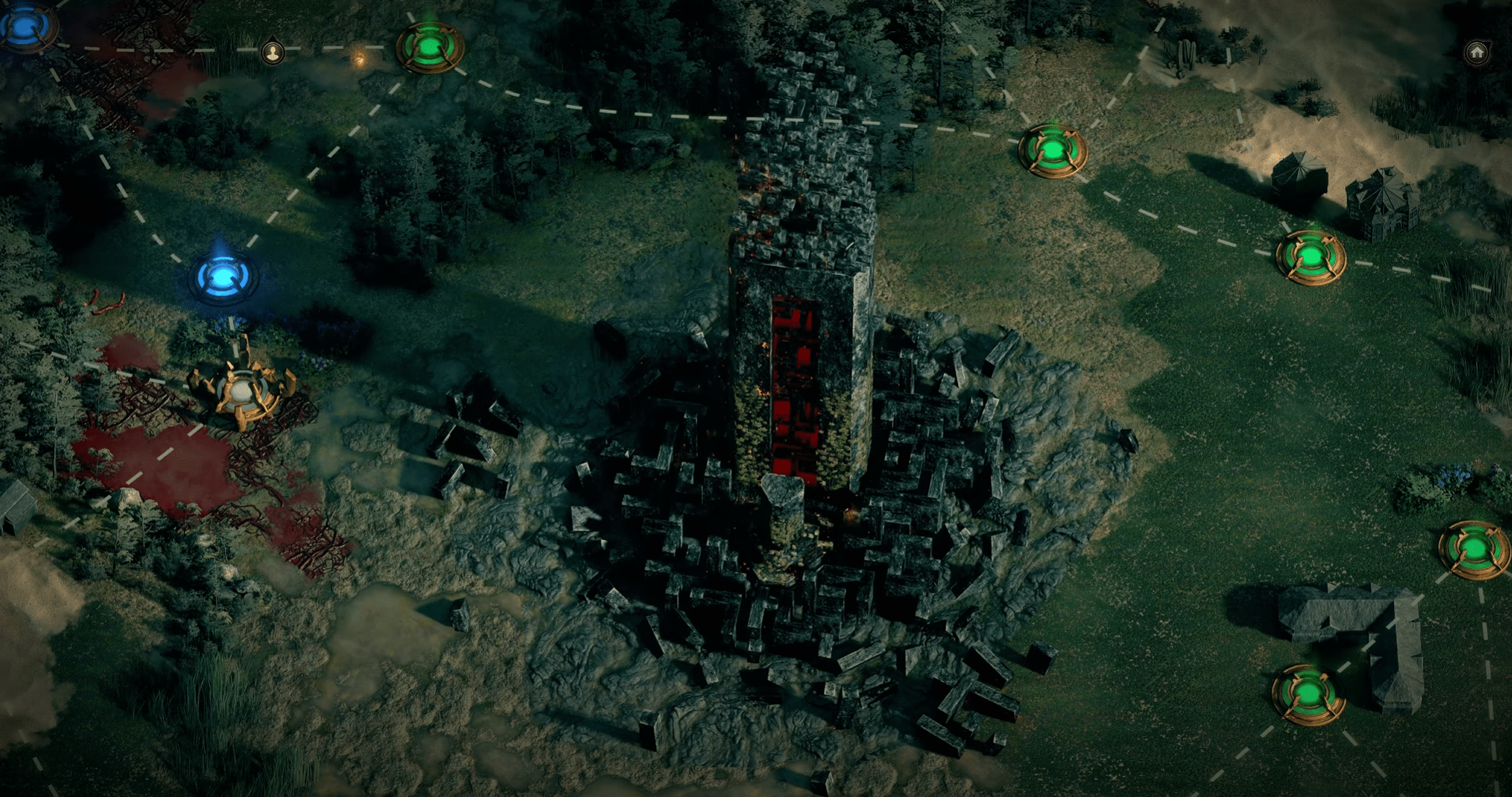
All of the above isn’t even the hardest challenge that you can take on. The pinnacle of Path of Exile 2’s endgame is an intense encounter with its ultimate boss, housed within a colossal fortress shrouded in mystery and danger. This ancient structure, partially emerged from underground, features a towering pillar of flame and ash at its core and is encircled by a perilous maze. The maze’s purpose is unclear—perhaps it is a barrier to keep intruders out or something far more sinister within. The fortress, with its ties to the enigmatic towers and tablets scattered throughout the Atlas, requires three keys to access, each held by the leaders of powerful factions. These leaders, known as Uber Act Bosses, guard their keys fiercely and are flanked by lieutenants who must be defeated first in adjacent zones. If you fail to overcome these foes, they will relocate, forcing you to track them down again. Triumph over all the Uber bosses, claim the keys, and you will unlock the gates to this fearsome fortress, gaining access to the ultimate Path of Exile 2 Endgame Boss. What lies within remains a secret for you to uncover, but the challenge promises to be the hardest content in the game, complete with a reward tree to customize your progression further after victory.
Conclusion
The goal of this guide was to get the Path of Exile 2 endgame explained and break it down into something everyone can understand. When looking at the late-game content in PoE 2, the standout feature is the freedom it offers players. The system includes interconnected areas and customizable paths where players can influence the types of challenges and encounters they face. Each of the four core mechanics is tied to special items that expand their presence and influence, letting you focus on the aspects of gameplay you enjoy most. Each mechanic also ties into a dedicated progression system, giving you the flexibility to shape your journey to match your preferences. Additionally, the overall progression framework comes with its own extensive customization options.
What’s most impressive is the sheer volume of content available. Even during early access, players can invest hundreds of hours exploring and uncovering rare areas, dynamic encounters, and formidable bosses. We hope that this guide helped you understand this side of PoE 2 content a little better, and you won’t feel lost from looking at the Atlas map. Good luck, Exile!
You might want to check out our hottest Destiny 2 offers, such as Kell's Fall Exotic Mission and Slayer's Fang to skip the grind and get ahead of others.
F.A.Q.
What is the Endgame in Path of Exile 2?
The endgame in Path of Exile 2 revolves around the Atlas, a vast, endlessly scalable map system. Players progress through randomized maps, fight challenging monsters, complete various mechanics like Breach and Ritual, and tackle the ultimate pinnacle boss. Each map offers unique rewards and opportunities to enhance your character.
How Does the Atlas Work in PoE 2?
The Atlas is a giant interconnected map where you unlock and traverse nodes by using crafted Waystones. It features biomes, unique encounters, and an Atlas Tree to customize your gameplay. The objective is to cleanse corruption, unlock deeper tiers, and eventually face the pinnacle boss.
What Are the Best Endgame Activities in Path of Exile 2?
Breach: Fight hordes of monsters pouring from a tear in reality for unique loot.
Ritual: Sacrifice monsters to altars for powerful rewards like Omens.
Delirium: Battle within a nightmare mist for Distilled Emotions to upgrade gear.
Expedition: Dig up artifacts and battle resurrected enemies for exclusive rewards.
How Do I Prepare for the PoE 2 Pinnacle Boss?
To prepare, complete high-tier maps to farm better gear and upgrade your character. Focus on crafting and optimizing your Atlas Tree for boss-related bonuses. Ensure your build is well-rounded to handle the fortress maze and the Uber bosses guarding the keys.
Can I Customize My Endgame Experience in Path of Exile 2?
Yes, PoE 2 offers unparalleled customization through the Atlas Tree and mechanic-specific skill trees. Choose which mechanics to emphasize, such as Breach or Delirium, and adjust map modifiers with crafted Waystones. This allows you to tailor the endgame to your playstyle.












